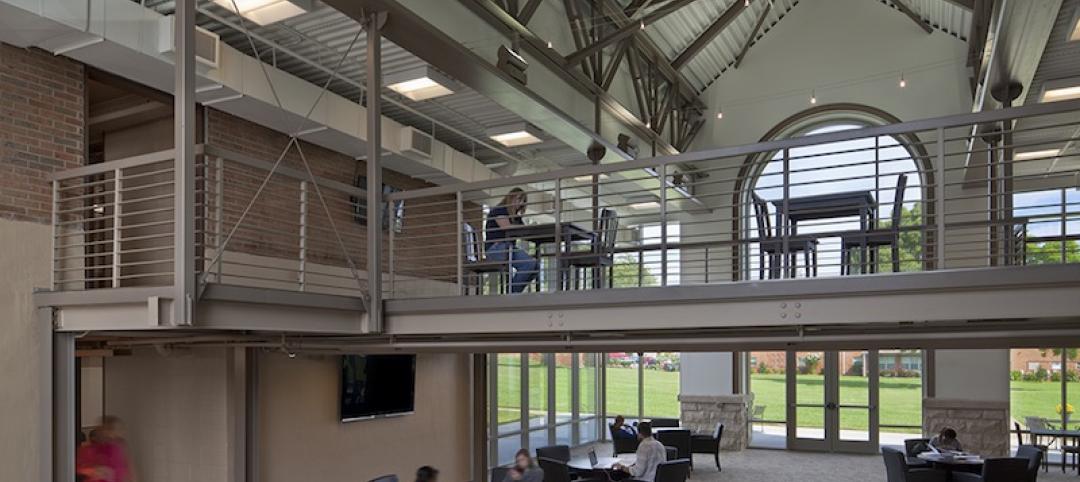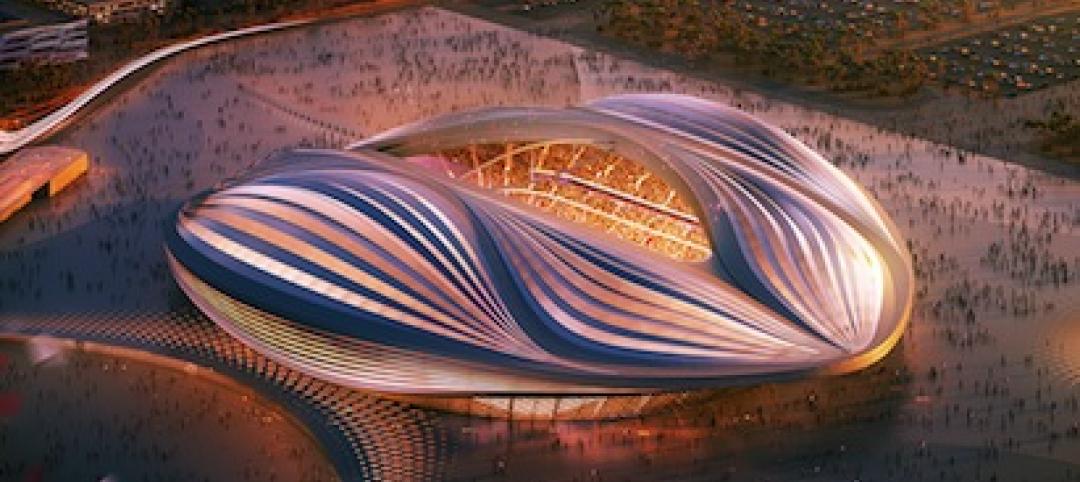The long-awaited “Field of Dreams” game between the Chicago White Sox and the New York Yankees was finally played on Thursday, Aug. 12 after being delayed by the pandemic. Neither the game, nor the stadium itself, disappointed.
The game registered just over 6 million viewers at its peak, making it the most-watched regular season MLB game since 2005. In addition to the wild game on the field, the field itself proved to be the star of the night.
SEE ALSO: Roadrunner Athletics Center of Excellence opens at the University of Texas at San Antonio
Located in Dyersville, Iowa, just a stone’s (or baseball) throw away from the original Field of Dreams field, Populous partnered with MLB, BaAM Productions, and BrightView to design the approximately 8,000-seat ballpark.
The ballpark’s design pays homage to Comiskey Park (home to the White Sox from 1910 to 1990) via the shape of the outfield and the bullpens just behind the centerfield fence. The stadium is carved into a corn field with corn replacing fans beyond both the left field and right field walls, as well as behind the bullpens in center field. A corn maze sits over the right field wall and is made to look like the MLB logo. A path through the corn rows lead fans to the ballpark.
Populous provided the feasibility study, ballpark, and supporting structures design in addition to the event services for the project.
Related Stories
| Dec 27, 2013
$1 billion 'city within a city' development approved by Coachella, Calif., city council
The mega development includes 7,800 homes, a retail center, office space, and nearly 350 acres of open space.
| Dec 13, 2013
Safe and sound: 10 solutions for fire and life safety
From a dual fire-CO detector to an aspiration-sensing fire alarm, BD+C editors present a roundup of new fire and life safety products and technologies.
| Dec 10, 2013
16 great solutions for architects, engineers, and contractors
From a crowd-funded smart shovel to a why-didn’t-someone-do-this-sooner scheme for managing traffic in public restrooms, these ideas are noteworthy for creative problem-solving. Here are some of the most intriguing innovations the BD+C community has brought to our attention this year.
| Dec 9, 2013
Tips for designing higher education's newest building type: the learning commons
In this era of scaled-down budgets, maximized efficiencies, new learning methods and social media’s domination of face time, college and university campuses are gravitating toward a new space type: the learning commons.
| Dec 4, 2013
First look: Dubai's winning bid for World Expo 2020 [slideshow]
Dubai has been chosen as the site of the 2020 World Expo. HOK led the design team that developed the master plan for the Expo, which is expected to draw more than 25 million visitors from October 2020 through April 2021.
| Dec 3, 2013
Historic Daytona International Speedway undergoing $400 million facelift
The Daytona International Speedway is zooming ahead on the largest renovation in the Florida venue’s 54-year history. Improvements include five redesigned guest entrances, an extended grandstand with 101,000 new seats, and more than 60 new trackside suites for corporate entertaining.
| Nov 27, 2013
Wonder walls: 13 choices for the building envelope
BD+C editors present a roundup of the latest technologies and applications in exterior wall systems, from a tapered metal wall installation in Oklahoma to a textured precast concrete solution in North Carolina.
| Nov 26, 2013
Video: Zaha Hadid's stadium for Qatar 2022 World Cup
Zaha Hadid Architects, in conjunction with AECOM, has released renderings for a major stadium being designed for the Qatar 2022 FIFA World Cup--an event that will involve up to nine stadiums.
| Nov 26, 2013
Construction costs rise for 22nd straight month in November
Construction costs in North America rose for the 22nd consecutive month in November as labor costs continued to increase, amid growing industry concern over the tight availability of skilled workers.
| Nov 25, 2013
Building Teams need to help owners avoid 'operational stray'
"Operational stray" occurs when a building’s MEP systems don’t work the way they should. Even the most well-designed and constructed building can stray from perfection—and that can cost the owner a ton in unnecessary utility costs. But help is on the way.

















